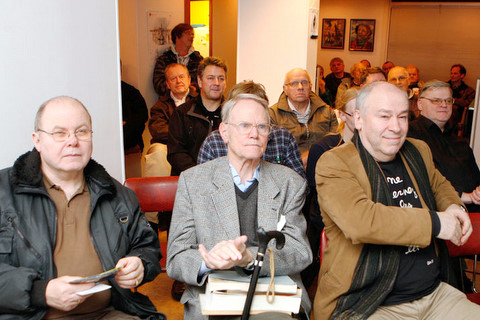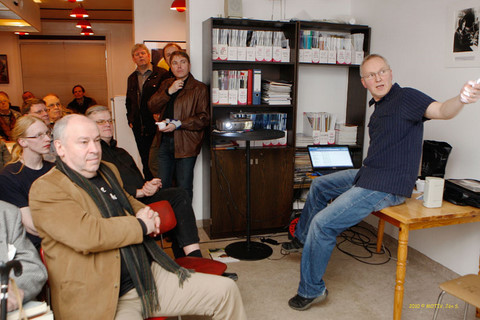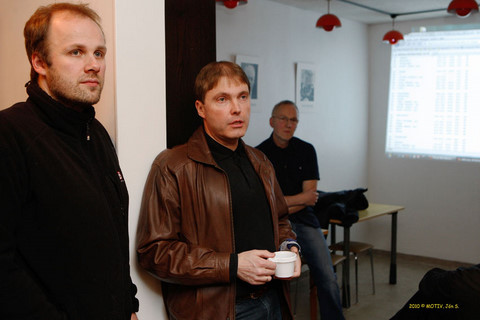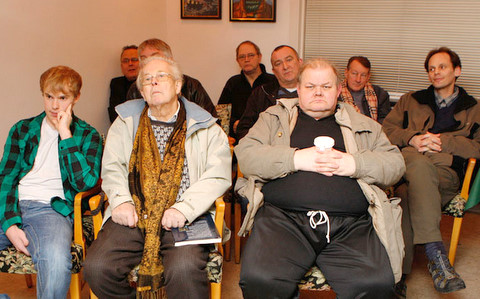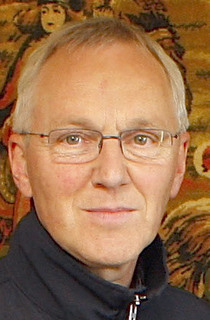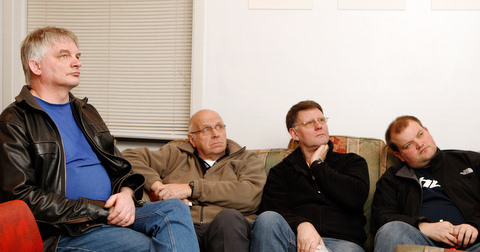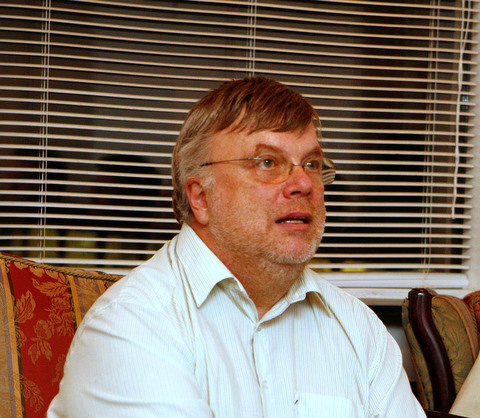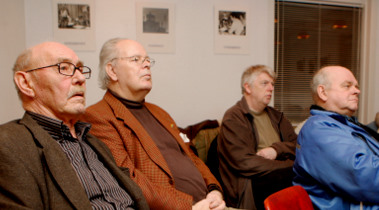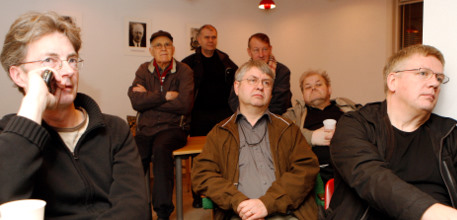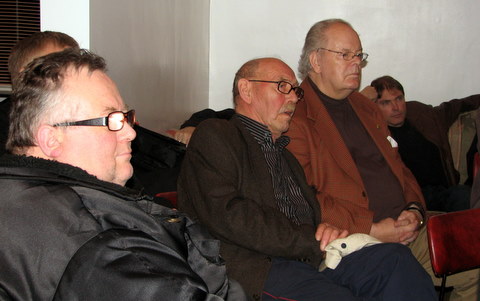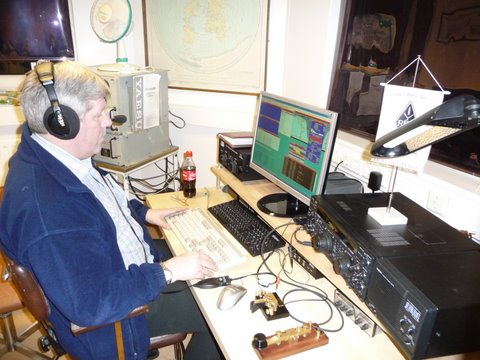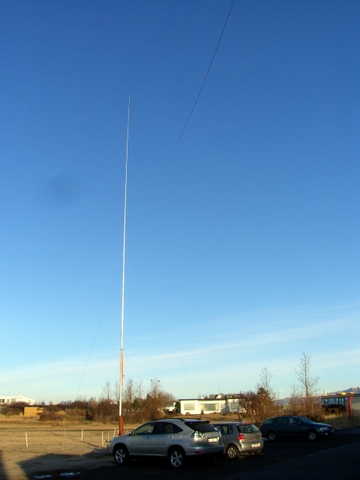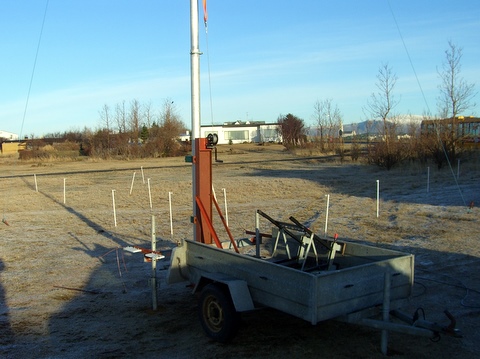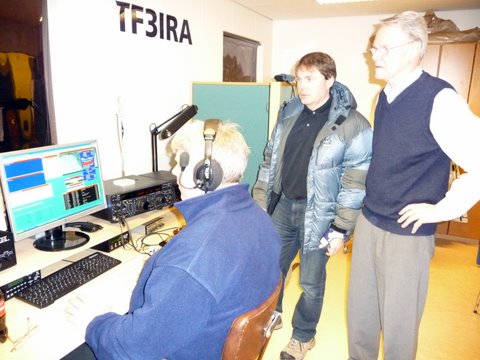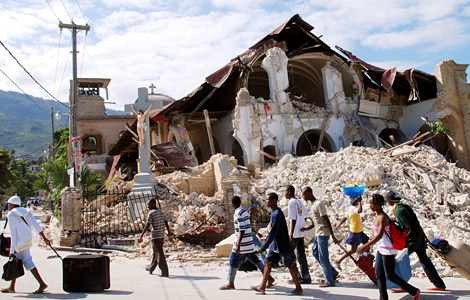
Skv. fréttabréfi ARRL þá hefur fjarskiptastofnun Haiti, CONATEL , gefið leiðbeiningar um það fyrir radíóamatöra sem áforma að fara til Haiti til að aðstoða við að koma á fjarskiptum hvernig þeir skuli bera sig að við að fá leyfi til fjarskiptastarfsemi. Sjá nánar hér . Skrifstofur CONATEL hrundu í jarðskjálftanum 12. janúar.
Annars gáfu Alþjóðasamtök radíóamatöra, IARU, út fréttabréf fyrir helgi þar sem m.a. er komið inn á stöðuna varðandi Haiti. Fylgir fréttabréfið hér fyrir neðan.
IARU E-LETTER
January, 2010
In this issue: A Message From IARU President Tim Ellam
Haiti Earthquake Report
____________________________________
A Message From Tim Ellam VE6SH/G4HUA,
Secretary Stafford requested that I provide an update on IARU
activities for the IARU E-Letter. I am pleased to do so.
Some recent activities:
o IARU Secretary Rod Stafford, W6ROD and IARU Coordinator for
Emergency Communications, Hans Zimmermann, F5VKP/HB9AQS have
attended meetings of the ITU Development Sector and are
preparing for the World Telecommunications Development
Conference to be held in Hyder?b?d, India in May.
o IARU Vice President Ole Garpestad,LA2RR and I presented our
credentials to ITU Secretary-General Hamadoun Touré, HB9EHT. We
were fortunate to have a lengthy discussion with Dr. Touré where
we outlined the goals for IARU within ITU. Dr. Touré expressed
his appreciation of the activities of the IARU and the Amateur
Service in general.
o Prepare for the upcoming ITU Plenipotentiary Conference to be
held in Veracruz, Mexico in October. Items on the agenda for
this important meeting include the election of ITU officials and
the consideration of changes to the ITU Convention and
Constitution that may impact the role of observers such as the
IARU. Region 2 Secretary Ramon Santoyo V, XE1KK is working with
the Mexican society, FMRE, to arrange an amateur station for
this event.
o Vice President Garpestad and I attended meetings of ITU-Working
Party 5A. In particular, we took part in Working Group 1
headed, for the first time, by new Chairman Ken Pulfer VE3PU.
This gave us a chance to meet in person with a number of the
members of the WRC-12 team. Both Ole and I were very pleased
with the efforts that are being made in Working Group 1 and
Working Party 5.
o At our recent meeting in Christchurch, the AC established a
common position with respect to the WRC-12 agenda items that are
of interest to the Amateur Services
o Amateur Radio Administrative Courses (ARACs) are in the process
of being planned in both Laos and Oman for later this year.
o Developed a plan to have the IARU better represented before
some Regional Telecommunication Organizations.
o Put in place a proposal to have more than one AC meeting a year
with the additional meeting to be held on a “virtual” basis
either through radio conferencing or teleconferencing.
o Communication amongst the AC members and the team preparing for
WRC-12 has been assisted by the establishment of two email
reflectors. This, I think, went a long way in enhancing our
discussions during the AC meeting which was held in
Christchurch, New Zealand last October
I am very pleased with the cooperative approach of the AC members
and our WRC-12 team and I think it bodes well for our future
activities.
When I was first elected to this position, I provided the AC members
with my view of our goals for 2009-2014. It is my hope that we
should strive to make the IARU the global voice of the Amateur Radio
Services and the world’s leading organization of Amateur Radio
Member Societies. I believe we are well along in that process.
One of our other goals is to provide more effective communication to
Regions and Member Societies. Hopefully we are improving in that
respect through some of the mechanisms we now have in place, such as
this E-Letter. We also wanted interact with our Member Societies
more frequently than we have in the past. Ole, Rod and I have been
able to do that in the past few months by our attendance at various
Hamfests or in meeting with Societies directly. We both plan to
have similar meetings throughout 2010.
Finally, I would like thank each of you for your continued support
of the IARU and its activities. Our work together will continue to
enhance the position of the Amateur Radio Services.
Please feel free to contact me or any member of the officer team if
you have any questions or issues that you would like to raise. I
can be reached by email at ve6sh@iaru.org.
Haiti Earthquake
(Note: The following account of the activities related to the response to the earthquake in Haiti that took place on January 12, 2010 is taken from the ARRL web site and provides information that
is available as of January 14, 2010.)
On Tuesday, January 12 at 4:53 PM Haiti time (2153 UTC), a magnitude 7.0 earthquake hit 10 miles (15 kilometers) west of Port-au-Prince, the island nation’s capital. Communications in and out of Haiti have
been disrupted. The ARRL encourages US amateurs to be aware of the
emergency operations on the following frequencies: 7.045 and 3.720
MHz (IARU Region 2 nets), 14.265, 7.265 and 3.977 MHz (SATERN nets),
and 14.300 MHz (Intercontinental Assistance and Traffic Net); the
International Radio Emergency Support Coalition (IRESC) is also
active on EchoLink node 278173.
There was no firm estimate on how many people were killed by
Tuesday’s quake. Haitian President Rene Preval said the toll could
be in the thousands: “Let’s say that it’s too early to give a
number.”
Tuesday’s quake was felt in the Dominican Republic, which shares the
island of Hispaniola with Haiti, and in Eastern Cuba, but no major
damage was reported in either place. The January 13 edition of The
Daily DX reported that the Rev John Henault, HH6JH, made contact
late Wednesday morning with the Intercontinental Assistance and
Traffic Net (IATN) on 14.300 MHz; this is the IARU Global Center of
Activity frequency for emergency communications. He said that he was
safe, but had no power and no phone service. He was operating on
battery power and hoping to get a generator running later in the
day. The edition also noted that Pierre Petry, HH2/HB9AMO — who was
in Cap Haitien (about 140 km north of Port-au-Prince) is safe; Petry
is in Haiti working for the United Nations World Food Program.
On Wednesday afternoon, Fred Moore, W3ZU, assisted Jean-Robert
Gaillard, HH2JR, with a phone patch to his friend Ariel in Miami.
“It’s bad, it literally is bad,” Gaillard told Ariel. “We don’t know
how many people are dead. We do not know what to expect. It’s chaos,
I’m telling you — it’s real chaos. We are really in a disaster
area. It’s really a war zone. Many, many buildings in the downtown
area are stripped from the ground with many people buried underneath
them – you name it, it’s bad.” Gaillard, who lives in
Port-au-Prince, was using his neighbor’s generator to make the
contact. “It’s really chaotic. I’ve never been in a war, but this is
what a war zone would be like. Dead bodies all over the place, dead
bodies buried. All I can tell you is that I’m okay, my house is
okay. We’ve had 30 aftershocks, the main one yesterday. We are
expecting some more shocks, so I’m a bit nervous to be inside the
house.”
According to IARU Region 3 Disaster Communications Chairman Jim
Linton, VK3PC, members of the Radio Club Dominicano (RCD) — the
Dominican Republic’s IARU Member-Society — and Union Dominicana de
Radio Aficionados (UDRA) are preparing to go to Port au Prince on
the morning of Friday, January 15, where they will install
HI8RCD/HH, an emergency radio communications station and a mobile
station.
FEMA (U.S. Federal Emergency Management Agency) Administrator Craig
Fugate advised that US assets should not self-deploy to affected
areas. “Initial reports from Haiti in the wake of yesterday’s
earthquake are concerning and troubling,” he said. “During times
like these, the emergency response community always stands ready to
assist those in need. The United States Department of State has the
lead for foreign disaster assistance, and US assets should deploy
only if tasked to do so by the State Department. The most urgent
need that the response community can fulfill at this time is
supporting ongoing disaster relief fund-raising efforts.”
On Thursday, January 14th, planes carrying teams from China and
France, Spain and the United States landed at Port-au-Prince’s
airport with searchers and tons of water, food, medicine and other
supplies — with more promised from around the globe. US Secretary
of State Hillary Rodham Clinton said that “tens of thousands, we
fear, are dead” and said United States and the world must do
everything possible to help Haiti surmount its “cycle of hope and
despair.” The US Army said a detachment of more than 100 soldiers
from the 82nd Airborne Division was heading out from Fort Bragg in
North Carolina, looking for locations to set up tents and other
essentials in preparation for the arrival of another 800 personnel
on Friday. That’s in addition to some 2200 Marines to be sent, as
the military prepares to help with security, search and rescue
missions and the delivery of humanitarian supplies. More than a
half-dozen US military ships also are expected to help, with the
largest, the aircraft carrier USS Carl Vinson, arriving later
Thursday.
Calls to emergency services weren’t getting through because systems
that connect different phone networks were still not working, said
officials from a telecommunications provider in Haiti. The
International Telecommunication Union (ITU) is deploying 40
satellite terminals and 60 units with broadband facility to
re-establish basic communication links, along with experts to
operate them. The ITU will also set up “a reliable, responsive and
complete cellular system designed to enable vital wireless
communications aimed at strengthening response and recovery
mechanisms in a disaster zone,” said ITU Emergency Communications
Division Chief Cosmas Zavazava. The ITU has allocated a budget of
more than $1 million US dollars to strengthen the disaster response
effort in Haiti.
ITU Secretary-General Hamadoun Touré, HB9EHT, expressed his
solidarity with the people of Haiti and offered his condolences to
the bereaved victims of the disaster. “The whole world is in shock
following the devastation and untold misery caused by the earthquake
in Haiti,” Dr Touré said. “ITU will do everything possible to
provide assistance to the people of Haiti by re-establishing
telecommunication links which will be vital in the rescue and
rehabilitation efforts in the days ahead.”
“The scope of the disaster clearly shows that the response to this
is going to be a long term effort,” said ARRL Media and Public
Relations Manager Allen Pitts, W1AGP. “The ARRL has been in contact
with communications leaders of the American Red Cross and Salvation
Army, as well as other key Amateur Radio operators throughout the
region. As teams from the hundreds of responding agencies worldwide
are formed for deployment, many will have Amateur Radio components.
ARRL is committed to providing communications aid to our served
agencies and working with the international community in this time
of crisis. At this time there are no known requests from agencies
for amateurs to travel to Haiti, but this can change. If it develops
that there are ARES® assignments for a deployment in Haiti, these
will be vetted and processed through each Section’s Section
Emergency Coordinators.”
The situation in Haiti is still chaotic. More information will be
posted on the ARRL web site (www.arrl.org) as soon as possible.
Information is being validated and shared between many amateur
groups and news sources as it unfolds.
——————————————–
If you have any information that would be appropriate to publish in
this electronic newsletter, please contact me at w6rod@iaru.org.
Rod Stafford W6ROD
IARU Secretary
——————————–
The IARU E-Letter is published on behalf on the Administrative Council of
the International Amateur Radio Union by the IARU International
Secretariat. Editor: David Sumner, K1ZZ, IARU Secretary.
Material from The IARU E-Letter may be republished or reproduced in
whole or in part in any form without additional permission. Credit
must be given to The IARU E-Letter and The International Amateur Radio
Union.
TF3Y
